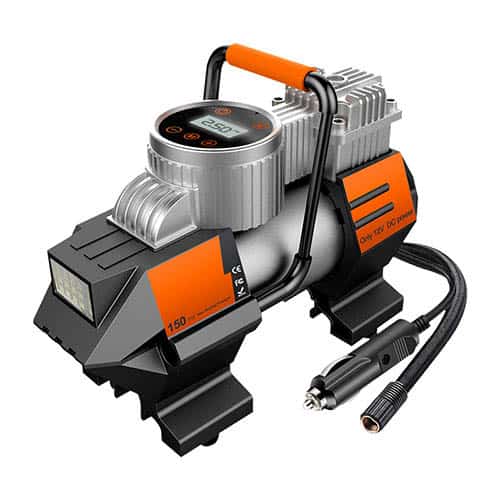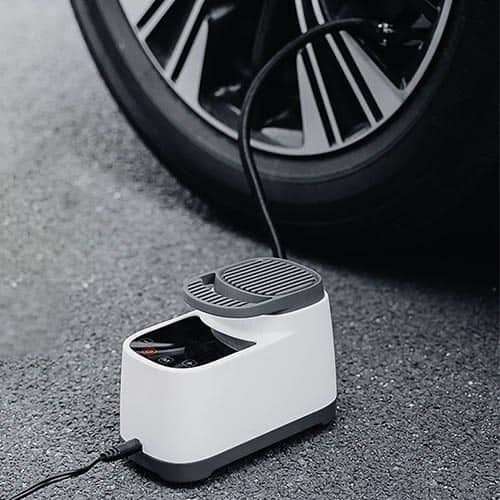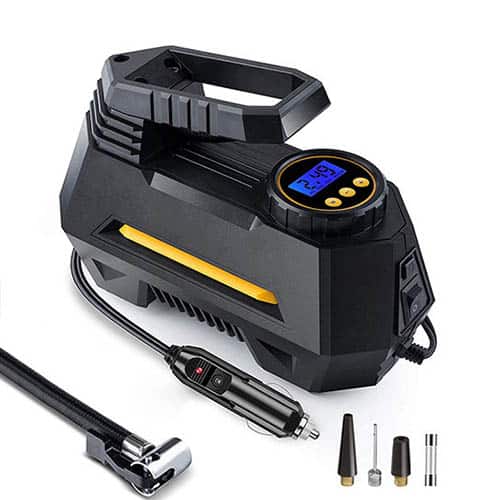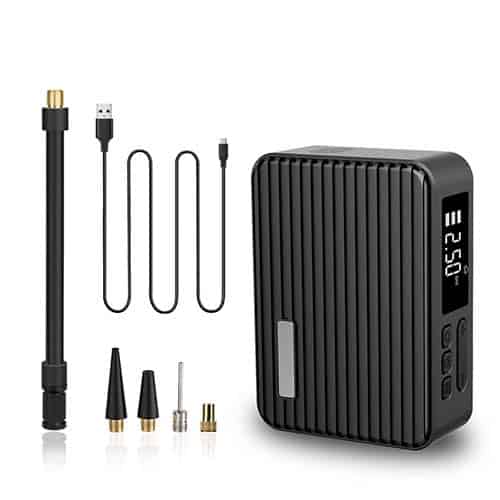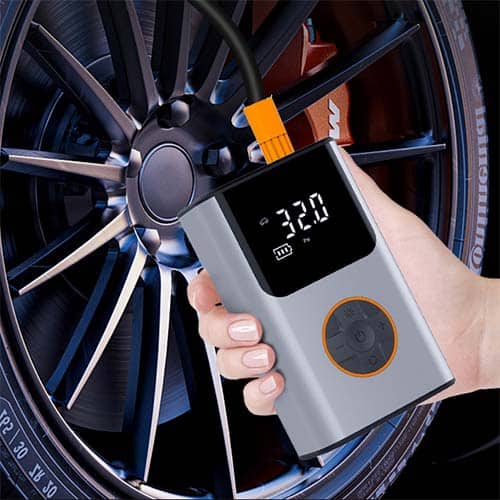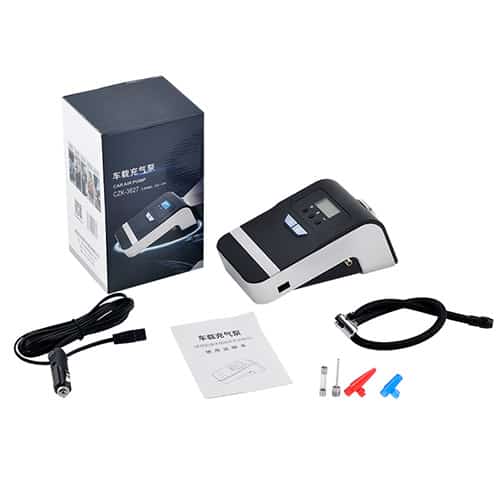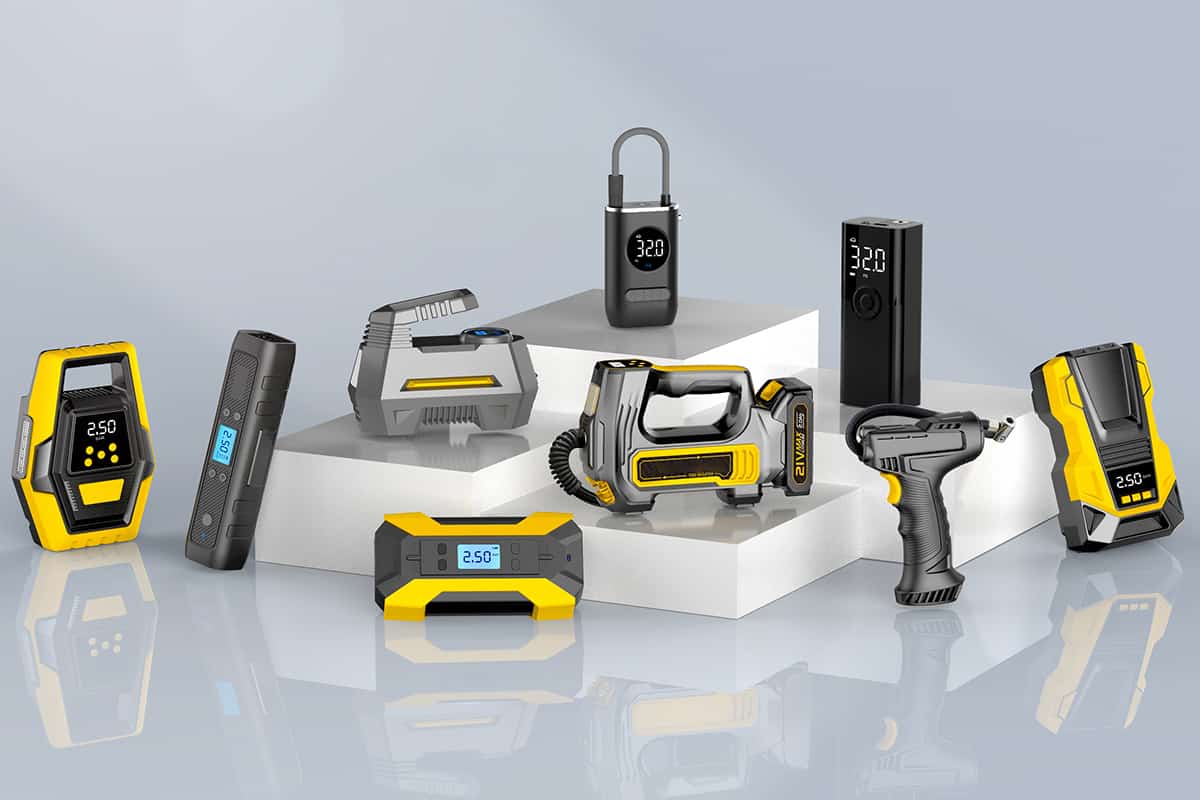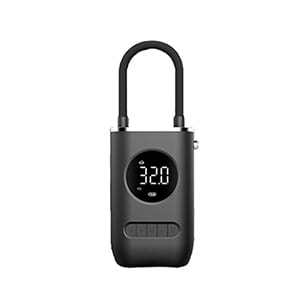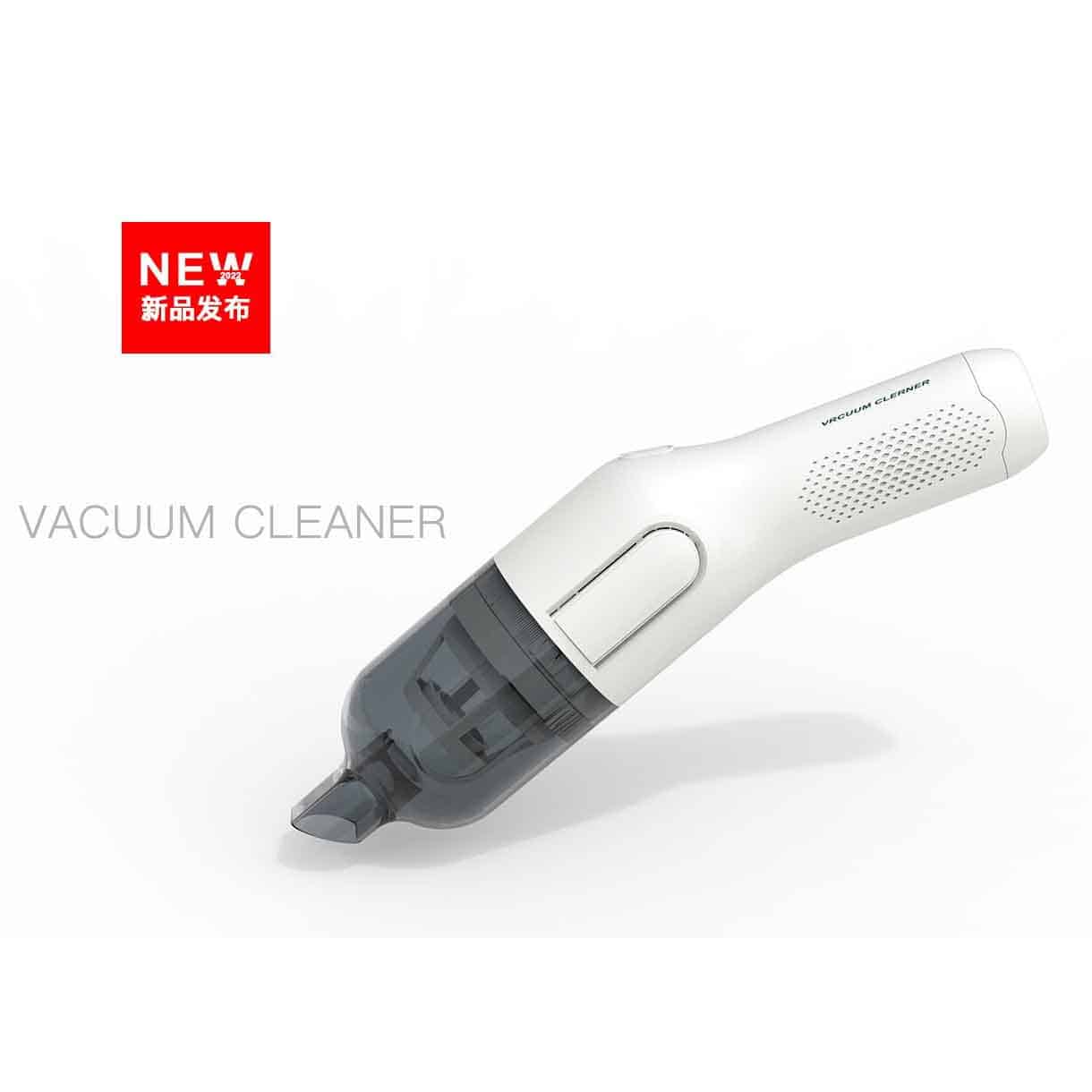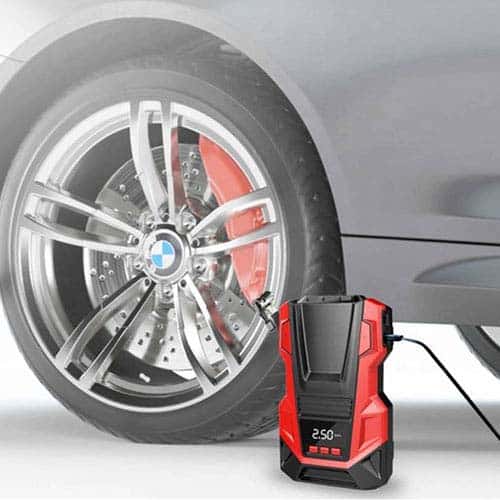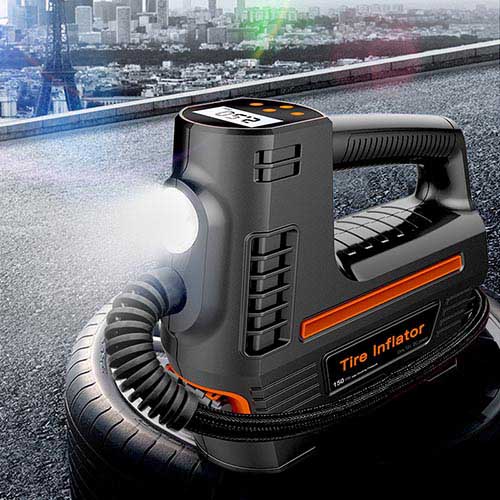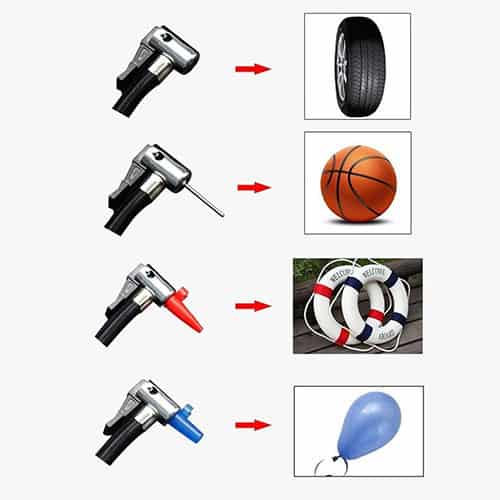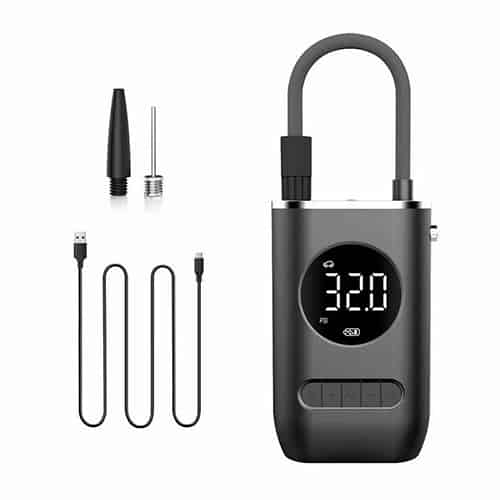WHAT IS A TIRE INFLATOR?
A tire inflator is a specific type of air compressor that is specialized for tires. As with air compressors, tire inflators function by converting electric energy into potential energy which is then stored as pressurized air. This pressurized gas means that there is no longer a need for the strenuous pumping of the manual tire inflators of the past.
BEFORE WE GET STARTED, HERE ARE A FEW IMPORTANT TERMS YOU’LL NEED TO KNOW
PSI= This stands for pounds per square inch, which refers to how much pressure your tire compressor is able to put out. For example, a tire compressor with a PSI of 150 will be able to fill up a tire faster than a tire compressor with a PSI of 100.
CFM = This stands for cubic feet per minute. This is related to the PSI and refers to the speed at which the tire inflator can release air into the tire. The term SCFM occasionally is shown with regards to tire inflators, but is the same as CFM it merely states that it is the standard cubic feet per minute.
12- Volt DC = This refers to the power source for the tire compressor being the cigarette lighter in your car.
110-Volt AC= This refers to the power source for the tire compressor being a wall socket.
Many people question whether a tire inflator is a worthwhile purchase. This is definitely something to take into consideration, so here are a few reasons why you need a tire inflator.
Owning your own personal tire inflator means you do not need to go to the garage to fill up your tires. The recommended frequency for checking and filling tires is every month, and most garages require payment to use their systems. The freedom of owning your own portable tire inflator means you can safely go on road trips and more without getting stranded or needing roadside assistance.
There are many important reasons why it is vital to keep your tires at the correct PSI. It is dangerous for your tires to be under or over inflated. Having tires at the correct PSI also reduces carbon footprint, uses less fuel, improves handling and control and ensures your tires last longer. The correct PSI also reduces the risk of accidents and blowouts.
WHEN WOULD YOU USE A TIRE INFLATOR?
The most obvious time to use a tire inflator is when you have a flat. In many cases, if the tire can still hold air a tire inflator will keep you going until you can get a repair or new tire. Additionally, in many cars a pressure warning light will go on in your car. This tends to happen when the tire has lost 25% of its PSI. However, it is important to check and refill your tires each month as cars tend to lose 1 PSI per month on average which is negative for the wear of the tires, fuel efficiency and more.
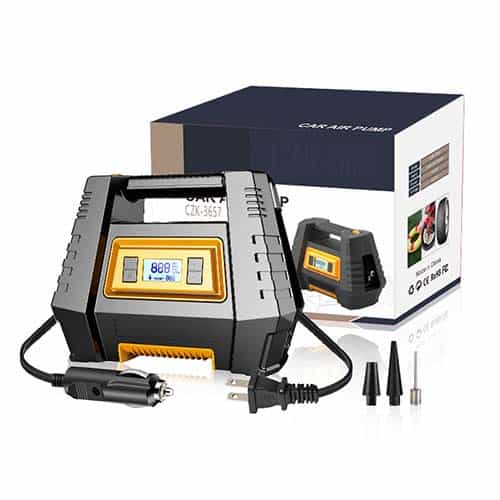
WHAT TO LOOK FOR IN YOUR TIRE INFLATOR
There are many different tire inflators, each of them with a unique combination of features. There are several standard features that are vital for the functioning of a tire inflator as well as a few good features in each one.
The first vital feature is the power source. With regard to the power source, there are a few different options. 12Volt DC which plugs into your car charging port – this is probably one of the most convenient options as you can keep it in your car and use it on the go, without needing to worry about keeping the battery charged. The cordless tire inflator runs on batteries and does not need to be plugged into a power source while functioning – this is helpful in limiting long cords and helping keep the tire inflator compact and lightweight. 110Volt AC plugs directly in the wall socket of your garage or home – this provides a high power charge often speeding up the process of inflating the tire. The final option is a multi-powered tire inflator meaning there is more than one option available for powering the tire inflator.
Inflation speed is the next feature to look at. Some tire inflators have a maximum PSI of 150. This is typically the highest in the range and means it will have the fastest inflation time in comparison to tire inflators with a PSI of 80 or 100. When deciding which PSI you want in a tire inflator, it is important to keep in mind the tires of your car, what size, how heavy duty and more. A truck, for example, cannot have its tires filled by a tire inflator that is suited for a Mini, as it would take too long and likely overpower the duty cycle of the tire inflator.
The size and weight of a tire inflator is also important to take into consideration. Most want the tire inflator to remain in the car to be used in case of emergencies as well as for the monthly refill. Therefore it is important to have a compact lightweight tire inflator to make it easier to fit the tire inflator in the car, especially when filling the trunk before going on long road trips.
Cords are the next important feature. It is helpful to have a tire inflator with a long enough cord length to reach all the tires on your car without needing to move the tire inflator. The desired length then depends on the size of your car. You also want to ensure that the cord is not too long giving the possibility of tangling and tripping unnecessarily. A good feature is that some tire inflators also have adaptors that allow you to inflate other household items like blow-up mattresses, inflatable decorations and more. When looking at the cords it is also important to ensure that it is made from durable material so that the lifespan of the tire inflator can be guaranteed even in the more replaceable parts such as the air hose.
In addition to finding a tire inflator with the right length hose for your car, it is also important to find the correct pressure hose chuck. This is the connection from the hose to the air system valve in the tire. Some tire inflators have a screw-on chuck, some have a click-on chuck and others require you to hold the hose to the pipe manually if the chuck is not strong enough. Finding the correct chuck, that can allow you the freedom to use your hands and do other things while the tire inflator is functioning is beneficial to the overall experience.
Tire inflators are generally loud and noisy when operating, so another factor to take into consideration is how quiet the tire inflator is. This does not impact the ability of the tire inflator to function properly, however it does impact the comfort in the experience of using it.
The duty cycle is also an important factor to keep in mind when looking for a tire inflator. This refers to the ability of the tire inflator to work for an extended period of time without needing to shut it off to cool down. A 50% duty cycle means that the tire inflator can run for 30 minutes but then would need a 30-minute cooldown, as opposed to a 100% duty cycle which can run for a full hour without needing to cool down.
Almost all tire inflators come with a pressure gauge. A tire inflator that has a built-in gauge is helpful to know when to stop filling the tire. It also means you do not need to buy both a pressure gauge and a tire inflator, as you have both features in one product. It is important for this to be accurate so that you can reach the desired PSI for your tires. Not all gauges are 100% accurate so make sure to choose a tire inflator with an accurate gauge. There are two types of gauges, pointer and digital. The pointer looks like a clock and can often be a little harder to read, digital gauges show you a precise PSI however these can also be a little inaccurate. If the tire inflator does have a pressure gauge, ensure it is the correct reading for your tire, if the gauge can only read up to 15 PSI, a car tire that is on average 30-35 PSI will not be possible to read on the gauge. Make sure to test first and read reviews to understand the accuracy of your tire inflator’s pressure gauge.
A good feature that is very handy is an automatic shut off. This means that the inflator will shut off as soon as it has reached the desired PSI. This means you do not need to worry about constantly checking the PSI of the tires and you are guaranteed to not over inflate the tires. This in itself can be dangerous, increasing the risk of a blowout and can cause extreme damage to the tire if the car hits any bumps or potholes in the road. Some tire inflators that have an automatic shut off also have specific programs for different things which lends a natural versatility to the tire inflator while also ensuring that it does not overheat.
LED lights or work lights are another helpful features on some tire inflators. It helps you fill your tires at night or in dark spaces as well as see under the car. Some of the lights can also function as warning lights. This is particularly useful when you need to pump your tire in the middle of the road and or at night.
A carrying case is another helpful good feature on some tire inflators. It helps you keep all the cords tucked away neatly, take the tire inflator with you should you be traveling to rent a car and for many other purposes.
Generally, it is also important to look for good build quality, comfortable easy-to-read gauge and easy-to-use design. As always it is helpful to read reviews and rankings of the best tire inflators.
HOW TO USE A TIRE INFLATOR
The first step, before even beginning to use the tire inflator, is to find out the required PSI for your car’s tires. This information can be found in the car manual, or on the car itself. Generally do not look at the tire pressure on the tire itself as that is generally the highest PSI possible, however, it is not ideal for fuel efficiency, safety and control. Once you know the desired pressure, make sure that the tires are cold. Tires that are warm will measure with a higher than accurate PSI, on average being around 3-5 PSI off, so make sure to take this into consideration when measuring the PSI of the tire. Then you can check the tire pressure to see how much inflation is needed. This is more relevant in tire inflators that do not have automatic shutoff as you would need to check the pressure frequently to make sure the tire reaches the correct PSI.
Once you have the tire inflator set up, take off the valve stem caps and ensure to keep them in a safe space. They are small and easily lost so keep track!
Connect the air pressure hose to the tire’s air valve system.
Turn on the tire inflator and wait until the desired pressure is reached. Depending on how much inflation is needed you should be able to see it working. If the tire is near flat or has lost a large percentage of the PSI you should see the inflation quickly, however, if it is merely the monthly refill of 1 or so PSI, you might not see a difference.
If the tire is not inflating, check for punctures as you would need professional assistance to help solve that problem.
Once the correct PSI is reached reattach the valve stem caps and you are ready to drive safely.
Tire inflators are the perfect tool to help you maintain your car, have great fuel efficiency, and ensure that you can be safe on the go. A tire inflator in your car will give you peace of mind on long road trips and give you the freedom to take care of your car yourself.
If you would like to find out more about our portable Tire Inflators, please feel free to leave a message online, chat with our team on WhatsApp +86 170 5109 5790 or send us an email at sales@kelylands.com. We always welcome your inquiries.

